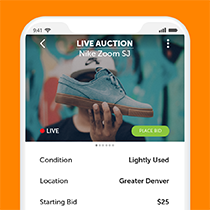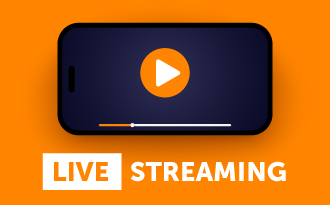When Do I Need to Use a CDN? 5 Use Cases
March 23, 2023
Content delivery networks (or distribution networks, whichever you like best) are essential components of the internet. These edge servers sitting around the world are what keep us connected at the speeds we’ve come to expect. As data from an origin server travels to a far-away end user, it passes through the closest CDN server to avoid network congestion and bottlenecking that would keep that data from loading.
You can learn more about how CDNs work and why they’re important through our comprehensive blog post on the matter. If your question isn’t so much “What is a CDN” but rather, “When do I need a CDN, and can I get away without one?” then you’re in the right place.
Table of Contents

High Traffic Events
If your website is hosting a high-traffic event or expecting a sudden (or potential) surge in viewership, a CDN can help you handle the load. CDNs can distribute the load of requests from your website to multiple servers, ensuring that your website remains up and running during high traffic times. Additionally, CDNs can cache static content to reduce the burden on your origin server, freeing it up to handle dynamic content.
For example, let’s say you’re selling merchandise via live commerce, and you’re running a flash sale with a limited time offer. You anticipate a substantial influx of traffic to your website during that time. If your streaming solution is not prepared to handle the surge, it could crash your website, leading to loss of sales and potential customers. By using a CDN, you can avoid this problem and ensure that your website runs smoothly during the sale.
Another example is when there is a major event happening, and your website is reporting on it. There will be a high traffic surge during that time, and using a CDN can help you avoid website crashes and ensure that your website can handle the traffic.
Global Audience
If your website caters to a global audience, using a CDN can help you improve the user experience for visitors from different parts of the world. This way, a user in rural Kansas with a poor internet connection can have an equally positive experience as someone in Tokyo because the CDN server closest to them will deliver the same content, reducing latency and improving page load times for both.
Streaming news platforms are common CDN users. These organizations distribute information about breaking events to people around the globe, so they can’t risk users in different places having varying experiences lest it impact their reputation. Content delivery networks make it possible for news broadcasters and publishers to reach people wherever they are with minimal latency and buffering so viewers can find out exactly what happened and how it affects them.
Large Video Files
CDNs are applicable for all kinds of large video files, both live and on demand. Even though you’ve already encoded and compressed said files, they’re still rather sizable and can take a long time to load on viewers’ devices (especially those with slower connections). A CDN can help you distribute load requests to multiple servers, therefore reducing the burden on your origin server and reducing the likelihood of causing a viewer unnecessary frustration. Businesses with expansive VOD libraries, for instance, benefit from CDNs even though their content isn’t live — hefty amounts of data still need to travel across the internet.

Live and On Demand Streaming
This one is obvious, but it’s worth covering: it’s very unlikely you will not need a CDN for live and on demand streaming, especially if you want to create a platform akin to an industry-specific Netflix or Hulu. Positive user experiences depend on swift delivery and rock-solid reliability due to the amount of bandwidth video data consumes, so content delivery networks help ensure both for high numbers of end users regardless of location.
Another example of a business that would benefit from a CDN is a sports website that broadcasts live games. Thousands or even hundreds of thousands of viewers likely watch the same stream simultaneously, which can cause extreme network congestion and lags if everything were flowing through the same digital pathway, but a CDN disperses the data so it reaches audience members more smoothly. Lags and buffering increase the likelihood of pushing viewers to turn to other sites for the big game, but lower latency keeps them on the same app or webpage.
Security and Content Protection
Another good example of when to use a CDN is if your website hosts confidential content or information. A CDN can provide security features such as SSL/TLS encryption, DDoS protection, and web application firewalls to prevent unauthorized access. Plus, content delivery networks can help protect your data from hotlinking and bandwidth theft, deterring other organizations from using your content or sensitive information without permission.
When NOT to Use a CDN
It’s also good to describe when you don’t need a CDN. A content delivery network may be unnecessary if you have:
- A limited budget that restricts your spending. CDNs can be expensive (though not always, especially when included in a one-stop shop solution, and there are free versions available), so compare CDN costs to the price of egress before you sign up for a solution you can’t afford.
- A small audience that is centrally located. Content delivery networks are necessary for streaming to viewers around the world, but if your audience is small and local, you likely only need a single server to make sure your content reaches them smoothly.
Otherwise, you’ll likely need a CDN, whether a large-scale one for reaching massive amounts of viewers or a free version for smaller but still distributed audiences.
When Do I Need to Use a CDN? Almost Always
It’s impossible to understate how critical CDNs are to businesses that need to distribute content rapidly and efficiently. If your website or streaming app falls under any of the use cases mentioned above, a CDN can help you improve your user experience, reduce bounce rates, and increase engagement.
Have you decided you need a content delivery network to optimize your streaming? Wowza’s powerful and flexible CDN is available to both software (on-premises) and cloud-based customers. Whether you are in the media, fitness, news, or any other industry that benefits from using video, Wowza can help you maximize your delivery speed without sacrificing reliability.





